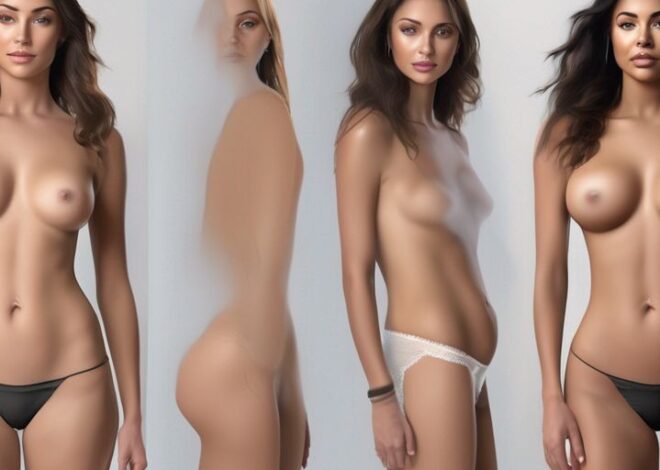
AI Undressing App: The New Frontier of Tech-Led Transparency
The AI undressing app, Nudify.Online, represents a significant leap in technological capability, allowing users to digitally remove clothing from images online. As this technology pushes the boundaries of digital transparency, it also raises serious questions about privacy, consent, and the ethical use of AI. This article explores the multifaceted aspects of such technology, from its core functionality and user experience to the broader ethical and legal challenges it presents.
Key Takeaways
- Nudify.Online uses cutting-edge AI technology to digitally remove clothing from images, enhancing tech-led transparency.
- The application raises substantial ethical concerns, particularly regarding privacy, consent, and the potential for misuse.
- Legal frameworks are currently lagging behind technological advancements, creating a complex landscape for users and developers.
- Despite its controversial nature, the app offers insights into future AI applications in personal privacy and beyond.
- Balancing innovation with ethical considerations and legal compliance will be crucial for the future development of similar technologies.
Overview of Nudify.Online

Nudify.Online is an advanced web-application designed to strip off clothes from people on images online, using the most advanced clothes-removing AI technology of 2024.
Core Functionality
Nudify.Online allows users to upload photos and uses AI to digitally remove clothing from the images. This functionality is intended for various applications, including art and design.
Technological Innovations
The platform incorporates cutting-edge AI algorithms that ensure high-quality image processing with minimal user input. It represents a significant leap in image manipulation technology.
User Accessibility
Nudify.Online is designed to be user-friendly, offering a simple interface that requires no prior technical knowledge. Users can easily navigate through the application and achieve desired results with just a few clicks.
Ethical Considerations

Privacy Concerns
The use of Nudify.Online raises significant privacy concerns as it allows users to manipulate images in ways that the subjects may not have consented to. This capability could lead to misuse, where personal images are altered without permission, potentially harming the individual’s privacy and reputation.
Consent and Legality
The app operates in a legal gray area, where the consent of the person in the image is not always clear or obtained. This ambiguity poses questions about the legality of such technologies and their compliance with global privacy laws.
Impact on Society
The societal impact of technologies like Nudify.Online is profound. They challenge existing norms about privacy and consent, potentially normalizing the non-consensual use of someone’s image. This could lead to broader societal issues, such as increased objectification or misuse of personal data.
Technical Aspects of Clothes-Removing AI

AI Algorithms Used
The core of Nudify.Online’s functionality lies in its sophisticated AI algorithms. These algorithms employ inpainting and reconstruction techniques to digitally remove clothing from images. This process involves isolating the clothing in an image, analyzing its properties, and then reconstructing the underlying skin or body parts without the clothes.
Accuracy and Limitations
While the technology is groundbreaking, it is not without its limitations. The accuracy of clothes removal can vary significantly based on the complexity of the clothing and the quality of the image. Factors such as lighting, angle, and clothing texture play crucial roles in the effectiveness of the AI.
Future Developments
Looking ahead, the developers of Nudify.Online plan to enhance the AI’s capabilities. Future updates aim to improve accuracy and expand the types of clothing the AI can effectively handle. This ongoing development is crucial for maintaining the relevance and effectiveness of the technology in a rapidly evolving digital landscape.
User Experience and Interface

Ease of Use
Nudify.Online has been designed with a user-friendly interface that allows even non-technical users to navigate and use the app effectively. The process is straightforward: users upload a photo, select the desired adjustments, and the AI does the rest.
Feedback from Users
The feedback from users has been predominantly positive, with many appreciating the simplicity and effectiveness of the app. However, some concerns have been raised about the potential misuse of the technology.
Design Principles
The design of Nudify.Online adheres to the principles of minimalism and functionality. The layout is clean, with intuitive controls and minimal distractions, ensuring that users can focus on their tasks without confusion.
Legal Landscape

Current Laws and Regulations
The legal framework surrounding AI technologies like Nudify.Online is complex and varies significantly across different jurisdictions. Most countries lack specific legislation that directly addresses the nuances of clothes-removing AI applications. However, general privacy and data protection laws may apply.
Potential Legal Challenges
Nudify.Online could face numerous legal challenges, particularly related to privacy and misuse. Issues such as non-consensual use of images could lead to significant legal disputes and public backlash, highlighting the need for clear usage guidelines and robust user verification processes.
International Perspectives
The international legal perspective on clothes-removing AI is fragmented. Some countries have started to draft regulations that could either restrict or allow such technologies under strict conditions. The global debate continues as stakeholders from various sectors weigh in on the potential impacts and ethical considerations of such technologies.
Market Impact and Business Model

Target Audience
Nudify.Online primarily targets tech-savvy individuals and digital content creators who seek to explore the boundaries of AI technology. The application appeals to a niche market interested in the novelty and capabilities of AI-driven image processing.
Revenue Streams
The primary revenue for Nudify.Online comes from subscription models and pay-per-use services. Additional income is generated through partnerships with other tech companies and advertising.
Competitive Analysis
Nudify.Online faces competition from similar apps that have emerged in the market. However, its advanced technology and unique features provide a competitive edge. The recent actions by major platforms like Apple to remove similar apps highlight the controversial nature of these services and may affect market dynamics.
The market’s response to these apps will be crucial in shaping their future viability and regulatory approach.
Future of AI in Personal Privacy

Emerging Technologies
The landscape of AI technologies is rapidly evolving, with new advancements appearing at an unprecedented rate. Key developments include enhanced encryption methods, more sophisticated anonymization techniques, and AI-driven privacy management tools. These technologies promise to significantly improve how personal data is protected.
Predictions for Privacy Norms
As AI becomes more integrated into everyday life, privacy norms are expected to shift. The public’s perception of privacy is likely to evolve, leading to new expectations about data security and personal space. This change will necessitate continuous updates to privacy regulations and practices.
Balancing Innovation and Ethics
The challenge of balancing technological innovation with ethical considerations is becoming increasingly complex. Developers and regulators must work together to ensure that advancements in AI do not compromise individual privacy. This collaboration is essential for fostering trust and ensuring the sustainable development of new AI applications.
Conclusion
The emergence of AI technologies like Nudify.Online, which can digitally remove clothing from images, represents a significant shift in the digital landscape. While these tools showcase the impressive capabilities of modern AI, they also raise profound ethical and privacy concerns. As we navigate this new frontier, it is crucial for developers, users, and regulators to engage in open dialogues about the implications of such technologies. Ensuring that innovation in AI aligns with ethical standards and respects individual privacy will be key to harnessing the benefits of tech-led transparency without crossing moral boundaries.
Frequently Asked Questions
What is Nudify.Online?
Nudify.Online is an advanced web-application designed to digitally remove clothes from images of people online, utilizing cutting-edge AI technology developed in 2024.
How does Nudify.Online ensure user privacy?
The platform incorporates stringent data protection measures, including encrypted data storage and transmission, to safeguard user privacy and ensure that all interactions with the service are secure.
Is it legal to use Nudify.Online?
The legality of using such technology can vary by jurisdiction. Users are advised to consult local laws and regulations to ensure compliance before using Nudify.Online.
What are the limitations of the AI technology used in Nudify.Online?
While the AI is advanced, it may not always accurately interpret complex clothing patterns or distinguish between actual clothing and body parts, leading to potential inaccuracies in the final image.
Can I use Nudify.Online for any image?
Users are encouraged to use Nudify.Online responsibly and ethically, with consent from individuals whose images are being processed, where applicable.
What future developments are expected for Nudify.Online?
Future updates may include improved AI accuracy, enhanced user interface, and expanded legal and ethical guidelines to adapt to evolving technological and societal norms.



